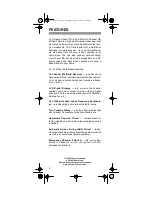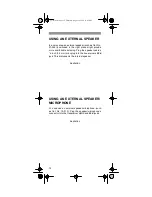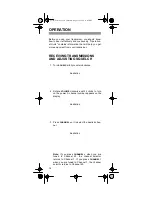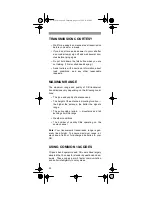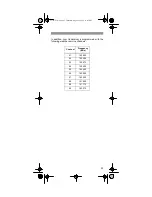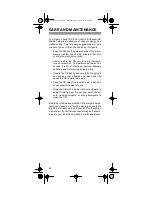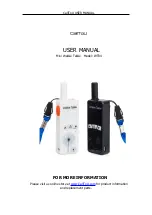
10
CHARGING NICKEL-CADMIUM
BATTERIES
The transceiver has a built-in circuit that lets you re-
charge nickel-cadmium batteries while they are in the
transceiver. To charge the batteries, connect a DC
power cord to the transceiver’s
DC13.8V CHARGE
jack and be sure the
NI/AL
switch is set to
NI
(see
“Using Standard AC Power” or “Using Vehicle Bat-
tery Power”).
Warning: Do not connect a power cord to the trans-
ceiver’s
DC13.8V CHARGE
jack if you installed non-re-
chargeable batteries (standard, extra-life, or alkaline)
and the
NI/AL
switch is set to
NI
. Non-rechargeable
batteries become hot and can even explode if you try
to recharge them.
It takes about 16 to 18 hours to recharge batteries
that are fully discharged.
Nickel-cadmium batteries come fully discharged. The
first time you use nickel-cadmium batteries, charge
them about 18 hours to bring them to a full charge.
Notes:
• Nickel-cadmium batteries last longer and deliver
more power if you occasionally let them fully dis-
charge. To do this, simply use the transceiver
until it no longer transmits or receives.
• To prevent permanent nickel-cadmium battery
power loss, do not charge the batteries at tem-
peratures below 14°F (–10°C) or above 131°F
(55°C).
• Do not overcharge batteries. Overcharging can
severely reduce the battery’s useful life.
Important: At the end of a rechargeable battery’s
useful life, it must be recycled or disposed of proper-
ly. Contact your local, county, or state hazardous
waste management authorities for information on re-
cycling or disposal programs in your area. Some op-
tions that might be available are: municipal curb-side
collection, drop off boxes at retailers, recycling col-
lection centers, and mail-back programs.
21-1678.fm Page 10 Thursday, August 5, 1999 12:45 PM


